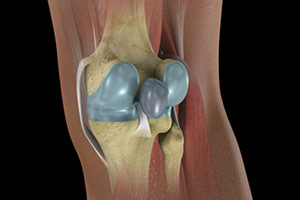A Baker’s cyst (also known as popliteal cyst) is a fluid-filled sac that forms in the popliteal fossa, which is located on the posterior aspect of the knee. It was named after Dr. William Morrant Baker, the 19th century surgeon who first described it.

A Baker’s cyst can develop when there is damage/injury/conditions to the knee joint or the tissues around the knee joint that results in inflammation. These can include:
- Osteoarthritis
- Rheumatoid arthritis
- Meniscus tear
- Anterior cruciate ligament (ACL) tear
In response to this inflammation, the knee produces excess synovial fluid which travels behind the knee and accumulates in the popliteal bursa. The bursa then swells and bulges, forming a Baker’s cyst.

Symptoms of a Baker’s Cyst
- Swelling behind the knee
- Stiffness behind the knee
- Slight pain in the knee towards the upper calf (especially with bending or completely straightening the knee)
- Pain which can become severe with full knee flexion
Treatment
- It’s possible for a Baker cyst to go away on its own
- You should always visit a healthcare provider as soon as you notice any new lumps or growths on your body. Even if you don’t need treatment, a provider needs to diagnose a Baker cyst and make sure it’s not something more serious
Your physician may drain the cyst, prescribe anti-inflammatories, and/or repair the underlying cause of the inflammation. They will often prescribe physical therapy.
Physical therapy can help to reduce pain and swelling associated with a Baker’s cyst as well as restore strength and range of motion.
Contact Us
Our experienced team of physical therapists is dedicated to helping you find relief from the discomfort and pain caused by Baker’s Cysts.


